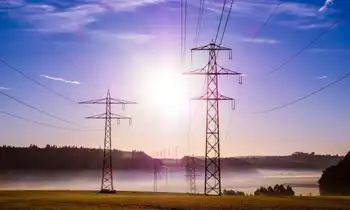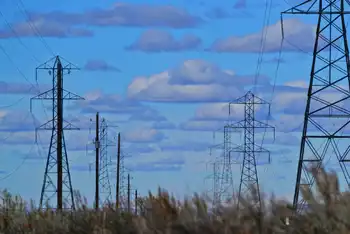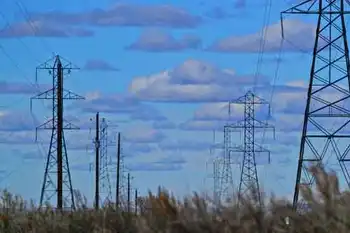Climatism and the new green industrial state
By Financial Post
NFPA 70b Training - Electrical Maintenance
Our customized live online or in‑person group training can be delivered to your staff at your location.

- Live Online
- 12 hours Instructor-led
- Group Training Available
David Suzuki has been pushing this idea for years, at times going so far as to claim that the National Post and some of its editors/writers are corporate pawns and shills for big businessÂ’s anti-climate change agenda.
One of Mr. Suzuki’s associates and chairman of the Suzuki Foundation, Jim Hoggan, operates a blog site and has a new book dedicated to the corporate-manipulation theme. Mr. Hoggan claims there exists a concerted public relations assault on climate science and policy that “could not be accomplished without the compliance of media as well as the assent and participation of leaders in government and business.” He talks of “a global PR machine that is too often in the service of special interests and too little concerned about the public interest.”
Let us now return to reality, where this idiotÂ’s guide to climate policy making doesnÂ’t survive 24-hoursÂ’ worth of news reports and press releases. The daily news flow is packed with evidence to the contrary and proof that the opposite is true: Big business and the globeÂ’s greatest corporate powers are marching in lock step with governments and environmentalists to impose climate policy on the world and its people. At the Copenhagen climate conference in December, no group looks forward more fervently than big business to a global carbon control agreement filled with firm targets, big tax increases and massive subsidies for special interests all over the world.
If thereÂ’s a corporate-driven global PR machine, itÂ’s firmly on the side of climate control, grinding out one corporate climate agenda after another, an avalanche of business-government co-operation the likes of which the world has never seen. And smack in the middle of this global PR machine, shifting the gears and greasing the wheels, are the worldÂ’s leading environmentalists and green NGOs: The World Wildlife Fund, David Suzuki, the Sierra Club, Environmental Defence, Forest Ethics, the Pembina Institute and many more. Together with industry, they pressure government in the creation of the green industrial state.
The shape of the green industrial state rises out of a not-so-attractive place in history. The two great theories of modern statism are part of the recent past: Communism has been dead for two decades, discredited with the fall of the Soviet Union; and full-blown fascism, with government in total control of a subservient corporate private economy, has been a non-starter since 1945. What we have now rising out of the ashes to fill the void is climatism.
Signs of climatism are everywhere. Here’s news yesterday from the Forest Products Association of Canada, whose president, Avrim Lazar, threw Canada’s forest firms behind a World Wildlife Fund campaign to stop global deforestation. Claiming Canada has no “net” deforestation — which means Canada does deforest, but offsets it by planting trees — Mr. Lazar said deforestation accounts for almost 20% of global greenhouse gas emissions. Could it be that Mr. Lazar’s forest firms are looking for other governments to take action that would favour Canadian industry?
Another green corporatist group — the Canadian ENGO-Industry Cap-and-Trade Dialogue — issued a final statement calling on the Canadian government to jump-start a national cap-and-trade carbon regime that would make no exceptions, for instance, for Canada’s rapidly expanding oil sands industry. The group’s members are a rogues gallery middlemen, energy consumers and green activists: The David Suzuki Foundation, Dow Canada, DuPont Canada, Environmental Defence, Forest Ethics, Pembina Institute, Royal Bank of Canada, Rio Tinto, Sierra Club of Canada, the Toronto-Dominion Bank and the World Wildlife Fund.
Looks like Jim Hoggan, chair of the Suzuki Foundation, is in bed with a mess of powerful corporations to promote their private interests so they can cash in on climate policy. The group also said it agreed with “the broad scientific view that the increase in global average temperature above pre-industrial levels ought not to exceed 2 degrees C.” Oh really. Did the Royal Bank’s risk department conduct the appropriate scientific assessment to determine the logic of global temperatures? Did they assess the risk of the bank being sucked into a perilous carbon trading market, carbon being a likely global investment bubble? Or is the bank just keen to rake in the billions that could be made trading credits and doling out loans to fund carbon credit purchases?
Corporate fingerprints, smudged with government and green group participation, is nowhere more evident than in the climate-driven rush into renewable energy. In Ontario, the list of corporations supporting and circling the provinceÂ’s new Green Energy Act is an appalling demonstration of climatism run amok. From TransCanada to GE, from wind farm developers to solar panel makers, itÂ’s a corporatist free for all. All have joined forces with David Suzuki, Environmental Defence and other green groups in cahoots with government to install a regime that looks all to much like a giant swindle. Mr. SuzukiÂ’s image, and his video support for their cause, is a fixture on the Ontario green energy web site.
The model for Ontario’s green renewable schemes is Germany, where climatism is well advanced and where solar and wind power programs — fuelled by the same feed-in tariffs proposed for Ontario — has created an economic fiasco. A new study, “Economic impacts from the promotion of renewable energies: The German experience,” published this month by the Rheinisch-Westfälisches Institut in Essen, Germany, found tens of billions had been wasted, consumers gouged, and carbon emissions essentially unchanged.
Also exposed in the German study is the myth of “green jobs” from renewables. In Ontario, Rick Smith, head of Environmental Defence and a prominent frontman for renewable programs, boasted that since Germany created 250,000 green jobs, Ontario would create 50,000 green jobs. But Germany’s job creation is doubtful. The institute report said Germany created 50,000 jobs at most — but at a cost of $240,000 per job.
Renewable energy may well be the best demonstration yet of the folly of climatism. But there is much more to come, at Copenhagen and beyond. To pick one example, a Canadian green business summit boasted Walmart, Maple Leaf Foods, Coca-Cola Bottling, McDonald’s, Home Depot as leaders, with a keynote speech by David Suzuki titled, “Business, like every other sector in society, must understand that being green is about sustainability.” He’ll be speaking to the converted.
Formal state corporatism is unmarketable as a political model, but green industrial statism looks like a winner.











